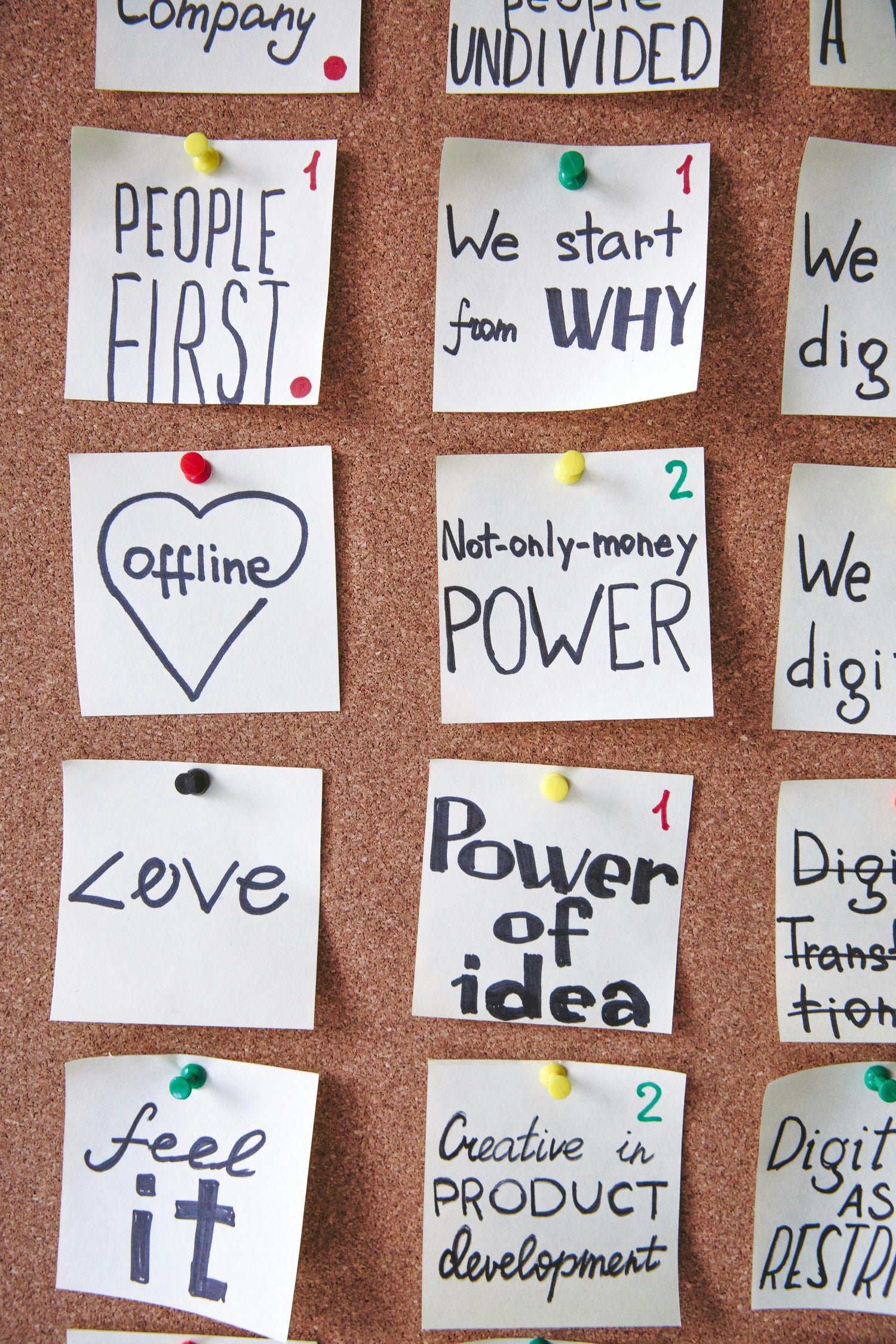Daily Life

Inversion
Definition
Inversion is a problem-solving technique where you address a challenge by asking how you might fail or how to achieve the opposite of your desired goal. By identifying potential pitfalls, you build strategies that preemptively avoid them.
Daily Life Explanation & Example
Often, focusing on “what not to do” is more concrete than listing best practices. After envisioning the worst paths or behaviors, you gain a sharper understanding of which habits or decisions lead you astray, and can consciously steer clear of them.
Everyday Example: If you want to improve your physical health, you might list ways to compromise it—such as eating junk food daily, avoiding exercise, or getting minimal sleep. Recognizing these destructive behaviors helps you craft a routine that consciously excludes them, making your healthy-living strategy more robust.
Business Explanation & Example
For organizations, Inversion can be applied in risk management and strategic planning. Rather than only brainstorming success strategies, teams ask, “How can we ensure this product launch fails spectacularly?” This new vantage point can reveal overlooked vulnerabilities—such as ignoring user feedback or misjudging customer demand.
Business Example: A tech startup planning an international expansion inverts the question, “How can we succeed overseas?” to “What would guarantee failure?” The resulting list—like failing to adapt to local culture or mispricing the product in new markets—becomes a checklist of pitfalls to avoid, informing a more culturally nuanced and financially prudent market-entry strategy.

First Principles Thinking
Definition
First Principles Thinking involves reducing problems, assumptions, or processes down to their most basic, fundamental truths. By systematically questioning each layer of accepted knowledge, you free yourself from inherited practices and can rebuild solutions in innovative ways.
Daily Life Explanation & Example
In day-to-day contexts, it’s easy to do things the way they’ve always been done—whether that’s following a particular diet trend or using specific cooking methods. When you practice First Principles Thinking, you ask why repeatedly until you reach the core reason or purpose behind an action. This helps you discard unnecessary steps, challenge ineffective norms, and discover more direct methods or healthier alternatives.
Everyday Example: Suppose you want to improve your morning routine. Instead of copying someone else’s schedule (e.g., “Wake up at 5 AM to exercise because a successful influencer does it”), you identify fundamental needs: quality sleep, efficient prep time, and adequate nourishment. You then design your routine around those essentials—maybe exercising in the late afternoon if it aligns better with your energy levels, or prepping breakfast the night before to accommodate more rest.
Business Explanation & Example
In a corporate setting, processes can become laden with entrenched policies (“We file these reports because we always have”). First Principles Thinking insists you interrogate each policy: What problem was it originally solving? Is it still relevant? By clarifying the root motivations, you may find simpler, more adaptive solutions that eliminate outdated steps.
Corporate Example: A software company reevaluating its bug-tracking system might discover that weekly in-person reviews were introduced when remote collaboration tools were limited. By questioning this assumption—“Why do we need everyone in a single room?”—they realize modern project management apps have far more robust features, making in-person reviews largely redundant. The result: a streamlined, asynchronous process that saves time and resources.

Habit Stacking
Definition
Habit Stacking refers to the practice of attaching a desired new habit to an existing, well-ingrained routine. By leveraging the cue-reward structure of habits you already have, you make it easier to introduce and maintain additional positive behaviors.
Daily Life Explanation & Example
We tend to gravitate toward routines we’ve repeated for months or years because they’re automatic. Habit Stacking takes advantage of that inertia: when a new behavior is paired with a familiar one, the transition is smoother, and the new habit requires less mental overhead to initiate.
Everyday Example: If you always pour yourself a cup of coffee in the morning, attach a quick mindfulness exercise (like focusing on your breath for 30 seconds) immediately after you hit the brew button. Over time, the aroma of coffee becomes the cue for your mini mindfulness session, making the new habit stick with minimal extra effort.
Business Explanation & Example
In a professional context, habit stacking can enhance productivity and team cohesion. By anchoring desired behaviors—like daily progress reporting or short strategy huddles—to an existing routine, you reduce friction.
Business Example: A sales team that already convenes briefly every morning to review the day’s schedule could “stack” a new habit of quickly celebrating a small win or lesson learned from the previous day. By pairing the new practice (a brief success story or insight) with the standing meeting time, it seamlessly integrates into the existing workflow and strengthens team morale.

2-Minute Rule
Definition
The 2-Minute Rule suggests that if a task can be completed in two minutes or less, do it immediately rather than deferring it. This combats procrastination by preventing small tasks from accumulating into a larger backlog.
Daily Life Explanation & Example
Procrastination often stems from the mental burden of long to-do lists. Even tiny items can create a sense of overwhelm when left undone. By resolving these tasks in the moment—paying a quick bill, responding to a short email, wiping down a kitchen counter—you maintain an environment (physical or digital) that feels organized.
Everyday Example: If you notice a basket of clean laundry that only requires 2 minutes to fold and put away, you do it right away. This prevents an ever-growing “laundry mountain,” keeps your living space tidy, and saves you from the mental load of “I still need to do that.”
Business Explanation & Example
In a fast-paced corporate environment, small tasks (like approving a single invoice, replying to a brief query) can stall bigger processes if they sit idle in a manager’s inbox. The 2-Minute Rule helps maintain operational flow by removing micro-bottlenecks and promoting a culture of rapid responsiveness.
Business Example: A project manager who receives frequent, quick questions from junior staff applies the 2-Minute Rule. Instead of batching these short answers for later, they address them immediately whenever possible. This practice avoids unnecessary delays and fosters a more efficient, agile work environment.

Eisenhower Matrix
Definition
The Eisenhower Matrix is a productivity and time-management tool that categorizes tasks into four quadrants based on urgency (time sensitivity) and importance (alignment with core goals).
Daily Life Explanation & Example
We often confuse urgent tasks (which demand immediate attention) with important tasks (which significantly impact our goals or well-being). By distinguishing these two dimensions, you can better allocate your energy to what truly matters.
If you list your daily tasks, you might find:
- Urgent & Important: Renew car registration that expires tomorrow.
- Important & Not Urgent: Scheduling a medical check-up for general well-being.
- Urgent & Not Important: Returning a non-critical phone call about weekend plans.
- Not Urgent & Not Important: Browsing social media out of habit.
Focusing first on urgent & important tasks, then systematically working through the other categories, ensures you spend the bulk of your time on high-impact activities.
Business Explanation & Example
Work environments teem with competing tasks—some truly crucial, others simply time-sensitive. The matrix helps teams and leaders prioritize effectively, so essential strategic or developmental work (important but not urgent) isn’t consistently sidelined by daily “fires.”
Business Example: A product manager identifies that building a new feature (important but not urgent) can significantly differentiate the product in the long run. However, daily bug fixes (urgent but not always important) keep commandeering the developer queue. By categorizing tasks, the manager schedules dedicated “development sprints” for the strategic feature, ensuring it gets consistent attention.

Sunk Cost Fallacy
Definition
The Sunk Cost Fallacy occurs when individuals or organizations continue a course of action primarily because they have already invested resources (time, money, effort), even if discontinuing would be more beneficial going forward.
Daily Life Explanation & Example
People often feel the need to “get their money’s worth” or not “waste” prior investments. Recognizing that sunk costs are already gone—and shouldn’t dictate future decisions—can liberate you from unproductive commitments or hobbies.
Everyday Example: You’ve spent $20 on a movie ticket, but you find the film boring 30 minutes in. The cost is sunk whether you stay or leave; if the experience isn’t valuable, it may be better to walk out and spend your time more enjoyably elsewhere.
Business Explanation & Example
Companies can fall victim to the same psychological trap—continuing flawed projects, maintaining underperforming product lines, or keeping failing marketing campaigns because of earlier investments. Such decisions can drain budgets and stall progress on more promising initiatives.
Business Example: A software firm has poured thousands of dollars into developing a proprietary tool that has failed multiple market tests. Instead of pivoting or cutting losses, they push forward in hopes of eventually salvaging their investment. Recognizing the Sunk Cost Fallacy could prompt them to reallocate resources to a more viable product, reducing further waste.

Compounding
Definition
Compounding is the principle that consistent incremental gains (or losses) accumulate exponentially over time, often leading to significant outcomes that surpass simple linear expectations. While typically discussed in finance, it applies equally to habit formation, skill-building, and personal growth.
Daily Life Explanation & Example
Small, repeated actions—like saving a modest amount of money each month, practicing a musical instrument daily, or reading a few pages of a book—may seem negligible at first. Over an extended period, however, they can lead to profound improvements or accumulations that dwarf the initial effort.
Everyday Example: Reading 10 pages per day might not feel like much. But if you keep it up daily for a year, that’s roughly 3,650 pages—or 10+ average-sized books, enough to transform your knowledge in a particular field.
Business Explanation & Example
In the corporate sphere, small operational improvements—like shaving seconds off a manufacturing process or consistently upselling a small percentage of customers—can translate into significant bottom-line growth after months or years.
Business Example: A retail chain invests in training its sales associates to ask each customer a quick upselling question. The immediate boost in daily revenue appears small, but compounded over dozens of stores and 365 days, it can meaningfully increase annual profits. This reinvestment can fund more initiatives, spurring a virtuous cycle of growth.
